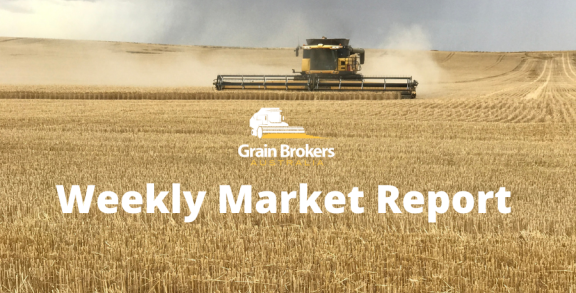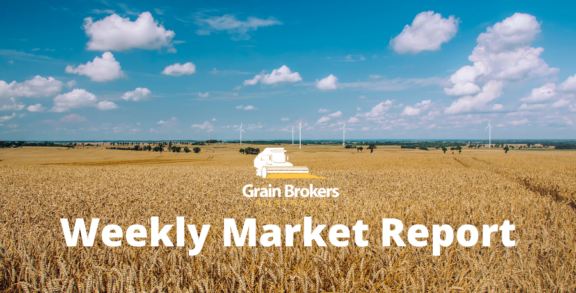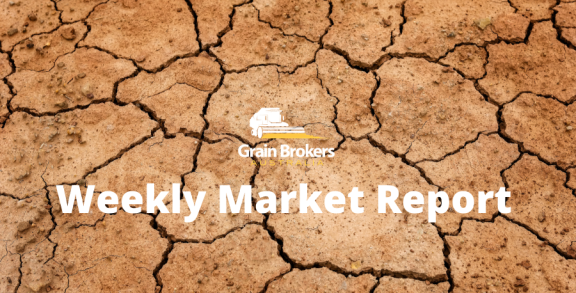
Iraq drifting to the dark side…
By Peter McMeekin
Talk that Iraq is looking at the possibility of importing Russian wheat is not great news for Aussie producers. Iraq may not be our biggest wheat customer, nonetheless, they are a substantial and vital buyer of Australian high protein wheat, averaging around 620 thousand metric tonne (kmt) over the last ten marketing years.
Iraq’s new trade minister, Mohammed Hashim al-Aani, has reportedly said that they will send a delegation to Russia in December to assess the quality and suitability of Russian wheat for domestic use as well as assessing their logistics capabilities. The majority of Iraq’s imported wheat is used for bread production, a diet staple consumed by about 75 per cent of the population with most meals.
Whilst shipping from Russia’s Black Sea ports traditionally has a freight advantage, quality is considered to be the biggest hurdle facing Russian exporters compared to traditional suppliers such as Australia, Canada and the United States (US). Of primary concern is the nature of the gluten content of Russian wheat and its suitability for Iraq’s milling industry.
The latest estimates place Iraq’s population at just under 40 million. About 35-40 per cent of Iraqi citizens live below the poverty line and are reliant on a monthly subsidy card system to supply subsidised bread and other essential foods. The Iraqi government wants to allow Russia to participate in the tenders to supply this massive rationing program, presumably, in the hope of buying suitable quality wheat but at a lower price compared to traditional suppliers.
Mohammed Hashim al-Aani also stated that he was looking to secure larger state funding for the rationing program with the aim of maintaining at least a three-month reserve of grain. This reserve would include purchases from local farmers which he expected to total around 2mmt this year.
Wheat consumption in Iraq is approximately 5–6 million metric tonne (mmt) per year. It usually imports around half of its annual requirements and, along with Saudi Arabia, is currently one of the few markets in the region that do not import Russian wheat. Domestic wheat production has been struggling to meet the increase in demand, primarily from the livestock sector, resulting in imports of almost 3mmt in the 2017 calendar year.
The Tigris and Euphrates rivers are the primary sources of water for Iraqi farmers producing wheat, barley and rice. This area of present-day Iraq was once known as Mesopotamia and was part of a huge region called the Fertile Crescent. Stretching from Iraq through modern day Syria, Cyprus, Lebanon, Israel, Jordan, Palestine and into Egypt, agriculture and early human civilisations flourished due to inundations from the surrounding river systems. It is regarded as the birthplace of agriculture, urbanisation, trade, science, history, writing and organized religion, and was first populated around 10,000 BC.
Erratic rainfall and construction of dams upstream in Iran and Turkey have reduced river flows in the Tigris and Euphrates by at least 50 per cent in recent decades. The lower flows have decreased critical electricity production and also increased the salinity of the water, rendering it unsuitable for agriculture in some parts.
Around one in five Iraqis are farmers. Less water means less land can be farmed, resulting in less production and lower farm income. This has forced people to find alternative employment or migrate to the larger cities where services are struggling to cope with the increased pressure and unemployment is on the rise.
Like eastern Australia, this season’s Iraqi wheat crop was hit by severe drought. According to Iraq’s Central Bureau of Statistics, this cut the country’s soft wheat output by 27 per cent to only 2.2mmt, its lowest since 2009. This means that Iraq’s import requirements in the 2018/19 marketing year are likely to be higher than in recent years.
In the five marketing years commencing in 2008/09, Iraq purchased an average of 900kmt per year from Australia, with the biggest being 1.65 mmt in 2012/13. In the five subsequent years, the average was much lower, with the 2015/16 season seeing only 52kmt of Australian wheat make its way to Iraq. The recently concluded 2017/18 marketing year saw Iraq import around 700kmt of Australian wheat, predominantly from Western Australia.
Nobody is questioning Russia’s long-term ability to meet some, or all, of Iraq’s wheat demand, so long as they can meet the quality parameters. SovEcon agriculture consultancy recently raised their current season wheat production estimate by 1.3 per cent to 70.7mmt. They said that the Siberian farmers had managed to harvest more crop than expected before the snow cover bought a halt to proceedings. SovEcon also increased their wheat planting forecast for next season to 18.3 million hectares, an increase of 3 per cent on their previous estimate.
Meanwhile, the harvest is ramping up in Western Australia and ramping down in many parts of eastern Australia. In Queensland, it seems like harvest started yesterday and finished today. Receivals into the GrainCorp system are less than 150kmt and unlikely to increase significantly. Most of the grain is either stored on farm or has bypassed the bulk handler system, and the trade, and gone directly to the hungry domestic consumer on the Darling Downs.
The story is similar in northern New South Wales where harvest came and has almost gone in the blink of an eye. Whilst the crop prospects in southern New South Wales are a little better, this year’s harvest peak will also come and go very quickly, and without a lot of fuss, much like Wagga Wagga’s famous 5 o’clock wave as it rolls down the Murrumbidgee.
On the flip side, yield reports from the early Western Australian harvest have been better than expected, with the Geraldton zone having a cracker. The eastern state’s consumer is praying that this continues and gives them a modicum of price relief until the sorghum crop is harvested. The problem here is that Western Australian wheat exporters are finding international demand at present values. At current price spreads, this will most likely lead to an increase in domestic barley demand, thereby freeing up wheat for traditional international markets such as Indonesia, and hopefully, Iraq.
Peter McMeekin is a consultant to Grain Brokers Australia. Call 1300 946 544 to discuss your grain marketing needs.





